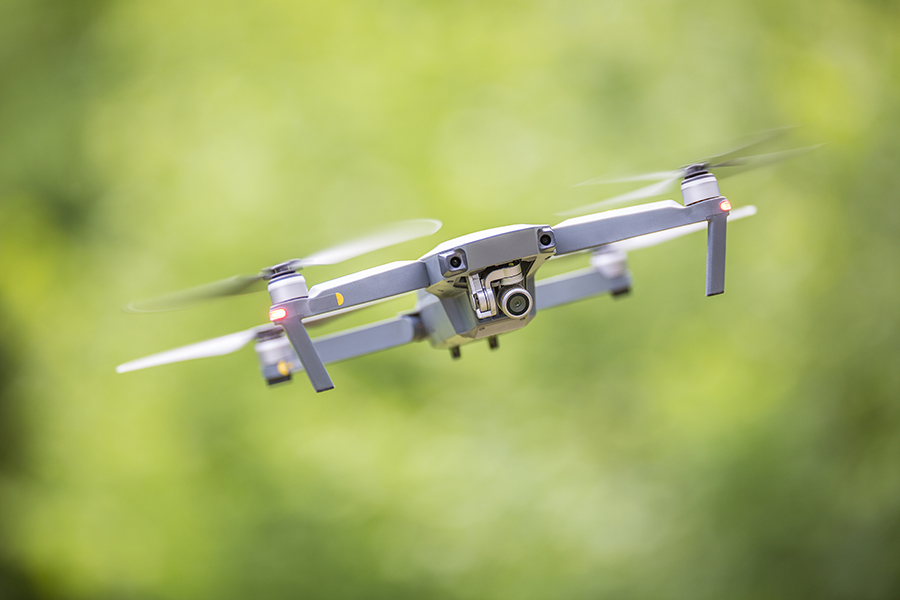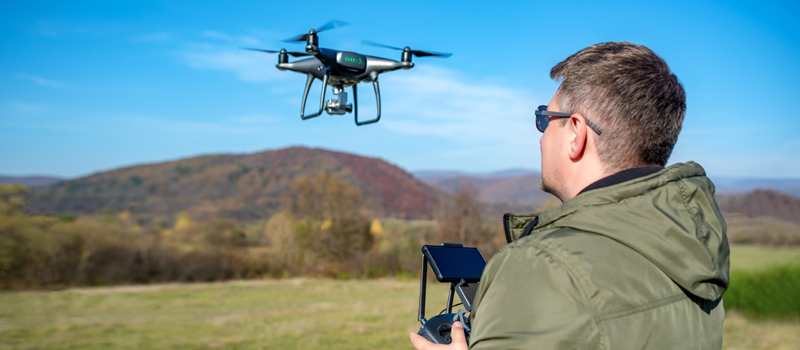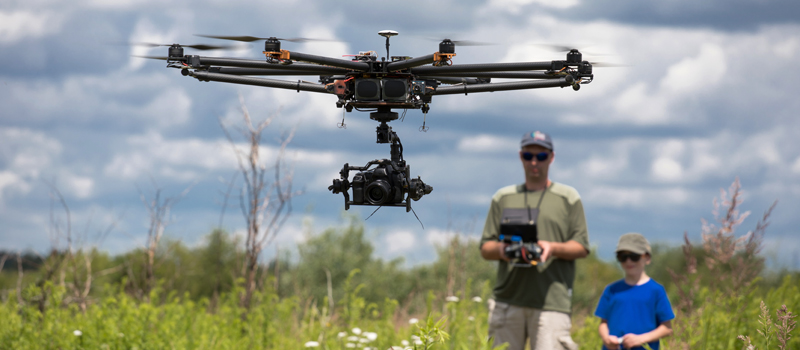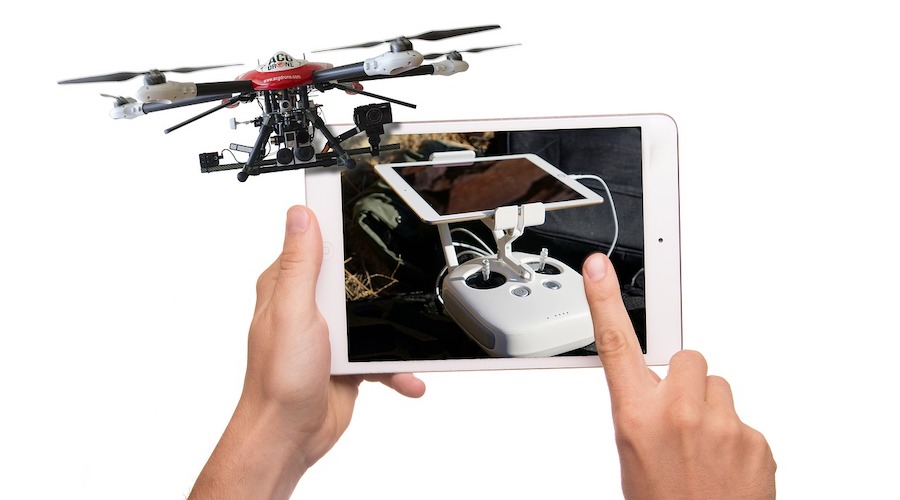-
Setting the baseline – Drone laws in the U.S.
- Commercial vs. recreational
- Drone registration
- Rules on controlled airspace
- Remote ID
- Other No-Fly Zones in the U.S.
- Drone laws at the state, municipal, and city levels
-
Drone laws in Canada
- Drone registration
- Basic operations vs. advanced operations
- Licenses for drone flight
- Rules for micro-drones
- National Parks policy
- Local drone laws
-
Drone laws in European countries
- Open vs. Specific vs. Certified
- Drone registration
- Pilot registration
- No-fly zones
- Country-specific laws
-
Drone laws in Japan
- Drone registration
- Airspace classes
- Other drone rules in Japan
- Remote ID
-
Drone laws in Australia
- Drone registration
- Remote pilot license or operator accreditation
- Flying in controlled airspace
- Other drone flight rules in Australia
- Local drone laws
-
Final thoughts
With drone laws in the U.S. evolving at a rapid pace, it has become essential for drone pilots to keep themselves updated on the latest legislation regulating drone activities. Further muddling up the waters is the fact that states and cities have also come up with their drone regulations. This is a matter that has frustrated drone pilots all around the country.
How does the U.S. compare to other countries in terms of drone regulations? Are we doing any better or worse? Let’s do a quick comparison to get some perspective.
Setting the baseline – Drone laws in the U.S.
The most relevant drone laws in the U.S. are those implemented at the federal level. These cover both the recreational and commercial use of drones, the requirements for drone registration, and the establishment of zones where drone flight is not allowed. This is a field that is still in a current state of evolution, mostly because of the new Remote ID rules.
Commercial vs. recreational
By default, drone flight in the U.S. is assumed to be under the 14 CFR Part 107 rules or the rules for commercial drone flight. Under these rules, drone pilots need to hold a drone license that is earned by passing a Part 107 knowledge exam. There are also rules on flying at night, over people, from moving vehicles, and beyond visual line of sight.
Recreational drone flight is allowed under Section 44809. This is an “exception” to the Part 107 rules that only apply for drone operations that are not for compensation. Recreational drone pilots still need to take The Recreational UAS Safety Test (TRUST) to learn about the basic rules of drone flight. Rules for recreational drone flight are generally more relaxed.
Drone registration
All drones that weigh more than 250 grams or 0.55 lbs. need to be registered with the FAA. This applies to both recreational and commercial use. Registration grants a unique registration number to the user, which must then be affixed and prominently displayed on the drone.
There is a special rule that applies to commercial drone operations that requires registration regardless of the weight of the drone.
Rules on controlled airspace
Controlled airspace refers to airspace that is over or around the airports in the U.S. Drone flight in controlled airspace is restricted by default. However, both recreational and commercial drone pilots can request airspace authorization to fly in controlled airspace.
Request can be done through the Low Altitude Authorization and Notification Capability (LAANC). This is a system that allows drone pilots to file requests through a mobile app and receive responses almost instantly. LAANC has given drone pilots in the U.S. a much higher degree of freedom to fly in controlled airspace.
Remote ID
One of the newest pieces of legislation on drone operations in the U.S., Remote ID makes it possible for drones to be identified via packets of information that they are required to continuously transmit. This is a system that creates traceability and accountability among drone pilots and was created to discourage the malicious or criminal use of drones.
The rule went into law in 2021 but is yet to be fully implemented until 2023. There is a very important deadline coming up in September 2022 when drone manufacturers will have to ensure that their drones are Remote ID-compliant for them to be sold in the U.S.
Remote ID is also one of the most controversial drone-related regulations today. There have been discussions about how Remote ID infringes on the privacy of drone pilots and can even put them in harm’s way. There have also been doubts as to how realistic the deadlines are, especially considering that the manufacturer’s deadline is only a few months away.
Other No-Fly Zones in the U.S.
Aside from controlled airspace, there is another category called restricted airspace. This can refer to zones that prohibit or discourage drone flight due to other non-airport-related activities. These can include military exercises or artillery testing. There are also National Security Areas, Military Operation Areas, Military Training Routes, Alert Areas, and Warning Areas.
All National Parks under the jurisdiction of the National Parks Service (NPS) are under a blanket restriction against drone flight that has been in effect since 2014. This applies to all areas under the NPS that include rivers, natural trails, historic sites, monuments, biking trails, and seashores. This is mainly because the NPS considers drones as sources of safety risks and nuisance to visitors, staff, and wildlife.
Drone laws at the state, municipal, and city levels
The drone laws at the state, municipal, and city levels in the U.S. is an entirely separate can of worms. Although the FAA claims jurisdiction over all of national airspace, this has not stopped local governments from establishing and imposing additional laws on drone operations within their territories.
Most of the local drone laws have to do with the regulation of drone laws to prevent privacy and safety violations. There are also laws in place that regulate how drones can be used by law enforcement.
The patchwork of different drone laws across the local governments continues to cause confusion among drone pilots. For this reason, we have come up with a database that chronicles the different local drone laws across the U.S. This is a continuously evolving resource that has grown significantly through user feedback.
Drone legislation in the U.S. has matured through the years, and there are good signs that the FAA continues to listen to the input of stakeholders, including drone pilots. However, there is still significant confusion concerning local drone laws. The soon-to-be-implemented rules on Remote ID have also stirred quite the controversy among the drone community.
Drone laws in Canada
Canada is considerably stricter in terms of where drones are allowed to fly. This is mostly because of policies that restrict drone operations in both National Parks and local parks, although rules on local parks can vary per municipality. However, restrictions are much more relaxed for smaller and lighter drones, making micro-drones very popular in Canada.
Drone registration
All drones that weigh between 250 grams and 25 kilograms must be registered with Transport Canada, whether they will be used recreationally or commercially. Registration costs a nominal fee and applies to both off-the-shelf drones and custom-built drones.
Drones that fall below the weight threshold require no registration. For drones that weigh above 25 kilograms, the requirement for a special flight operations certificate applies.
Basic operations vs. advanced operations
The drone rules in Canada make a major distinction between two types of drone operations – basic and advanced. There is a corresponding license requirement that applies to either of these two types of operations.
The basic operation applies to operations that satisfy three requirements – that the drone is flown only in uncontrolled airspace, it never flies directly above bystanders, and that the drone remains more than 30 meters horizontally from bystanders. If any of these conditions are not met, then the flight is considered under the advanced category.
All operations that do not fall within the standards of basic operations are considered advanced. Drones used in advanced operations must meet the standards of Remotely Pilot Aircraft System (RPAS) Safety Assurance as listed on the Transport Canada website. The RPAS list also specifies which drone models are safe to fly in controlled airspace, near people, or over people.
When drone operations fall outside the boundaries of either basic or advanced operations, then a Special Flight Operations Certificate (SFOC) will have to be secured. Examples include flying beyond visual line of sight, 400 feet altitude, or flying a drone that weighs more than 25 kilograms.
Licenses for drone flight
Licenses for drone flights in Canada correspond to the type of operations that the pilot intends to conduct. Those conducting basic operations will need to have a basic license that is granted after passing the online Small Basic Exam.
For those conducting advanced operations, an advanced license will be required. There are several steps to take to get one. The applicant must first pass the online Small Advanced Exam, after which they will need to take an in-person flight review. During this review, the reviewer will assess if the applicant has the ability to safely fly a drone under the circumstances of advanced drone operations.
Consistent with the rules of basic and advanced drone operations, only pilots with advanced licenses can fly their drones in controlled airspace. However, they will still need to secure approval from the appropriate air navigation service.
Rules for micro-drones
Micro-drones (drones that weigh less than 250 grams) are not subject to the drone registration and pilot licensing requirements in Canada. For this reason, micro-drones have become very popular in this country, especially for recreational pilots.
Rules related to safety still apply to micro-drones. These include altitude limitations and flying a drone within a visual line of sight. Micro-drones are still prohibited from flying over emergency sites, advertised events, some airports, and No-Fly Zones identified by Section 5.1 of the Aeronautics Act.
National Parks policy
Drone flight is prohibited in all recreational areas under the jurisdiction of Parks Canada. Much like the NPS policy in the U.S., this rule was set in place to eliminate the safety risks and potential disturbance that drones may cause park visitors and wildlife.
Local drone laws
Provinces, counties, cities, and towns in Canada have come up with their own laws regulating drone operations. Many of the drone laws at the state level prohibit drone operations in areas operated by the state parks authority, adding even more restricted areas to those cited by the National Parks policy.
The prevalence of laws that prohibit drone use in parks in Canada makes it very difficult to find a public park that allows for drone flight. For this reason, many drone pilots in Canada recommend flying within a private property as long as permission from the owner can be secured.
Drone laws in European countries
Drone operations in EU Member States are regulated by the European Union Safety Agency (EASA). The countries of Iceland, Norway, Switzerland, and Lichtenstein have also adopted the EASA rules. However, some countries may also implement their own specific drone laws.
Open vs. Specific vs. Certified
According to EU Drone Regulation 2019/947, drone operations in EU Member States will be classified into one of three categories – open, specific, or certified.
Operations under the Open category are considered as those that pose the least amount of safety risk. These are civil drone operations that require no operational authorization to initiate. Operations under the Open category are further subdivided into three classes – A1, A2, and A3.
Open A1 operations apply to drones that weigh less than 900 grams. Pilots under this category must pass an online exam if they are flying drones that weigh more than 250 grams. Drone flight over uninvolved people is allowed under Open A1 but not over crowds or assemblies of people.
Open A2 operations apply to drones that weigh more than 900 grams but less than 4 kilograms. Drones under Open A2 cannot fly over people and are only permitted a safe distance (at least 50 meters) from uninvolved people while flying. Pilots flying under Open A2 need to pass the training and exam as set by the national competent authority.
Open A3 operations apply to drones that exceed 4 kilograms in weight but are less than 25 kilograms. These drones are not allowed to fly near or over people. They must also maintain a distance of at least 150 meters away from residential, commercial, or industrial areas.
Riskier operations not covered by the Open category fall into the Specific category. Pilots flying under this category generally will need operational authorization from the National Aviation Authority (NAA) unless they operate under the “standard scenario” set by the EASA. The operator must also have been granted a Light UAS Operator Certificate (LUC).
High-risk operations are considered under the Certified Category. The EASA considers drone flight over large groups of people as high-risk, as well as the transport of dangerous goods that could result in high risk in the event of an accident. Though applications under this category are rare, the provision was included in the preparation of future developments such as drone parcel delivery or unmanned transportation of cargo across long distances.
Drone registration
Only drones that are certified need to be registered. Otherwise, only the drone operator needs to go through registration.
Being “certified” in the context of EU regulations means that the drone has a certificate of airworthiness issued by the National Aviation Authority. This certification is not needed for operations in the Open category. However, drones may need to be certified if there is some level of risk involved in their intended operations – such operations should be done in either the Specific or Certified category.
Pilot registration
All drone operators in the EU will need to go through the registration with only two exceptions – (1) that they are using drones that weigh less than 250 grams and have no cameras or sensors that can record personal data; or (2) that they are using a drone that weighs 250 grams and has a camera or sensor but is classified as a ‘toy’ drone according to Directive 2009/48/EC.
Drone operator registration is done through the National Aviation Authority of an EU Member State. A list of these agencies can be found on the EASA website. This registration must be done prior to conducting any type of drone operations within the EU Member States. Registration is ideally done in the operator’s country of residence or the principal place of business.
EU drone registration is valid for any number of drones that an operator uses or owns. However, all drones must be labeled with the drone operator ID of the operator/s who owns or regularly uses them.
The good thing about the EU drone regulation is that you only need to register under one Member State to be able to fly a drone legally over any other area under the jurisdiction of the EU. Some Member States may require approval for cross-border operations, but there should be no need to go through the entire registration process again.
No-fly zones
Just as with the U.S. and Canada, EU Member States have areas that are considered no-fly zones for drones. The EASA requires that all Member States maintain maps that document the location and extent of these no-fly zones. Some of these areas may require additional authorization while others may expressly forbid drone flight.
Member States and local agencies are given the freedom to implement bespoke drone flight restrictions on specific geographical zones. For instance, drone flight over parks or industrial facilities may be allowed upon granting of flight authorization from the authority managing the area. States may also define zones where drone flight is allowed under specific conditions such as reduced altitude ceilings or limitations on maximum drone weight.
Country-specific laws
Although the EASA rules already encompass a wide range of drone regulations, some EU Member States have also come up with their own set of rules. Some countries may require insurance for commercial drone operations or have different minimum age requirements for drone pilots.
An area that differs greatly across the EU Member States is the rules on where drones are allowed to fly. For instance, Germany has very specific rules on the type of drones and drone operations that are allowed over residential properties. In Poland, there are certain regions such as those near the eastern border and in Warsaw where additional permits are needed for drone flights. It’s best to do some research on the relevant local drone laws when moving to any EU Member State.
Drone laws in Japan
Japan is quite a unique setting because it is one of the first few countries to implement a Remote ID requirement for drones. Many of the other drone rules, as implemented by the Japan Civil Aviation Bureau (JCAB), should be familiar to U.S. drone pilots.
Drone registration
As of June 20, 2022, all drones in Japan that weigh more than 100 grams and are operated outdoors must be registered with the Ministry of Land, Infrastructure, Transport, and Tourism (MLIT). Registration is done via the Drone/UAE Platform Registration System (DIPS).
Registration involves a nominal fee. There are also options to enter information on any flight certification or drone insurance that the operator is holding. This should theoretically help in the processing of the application for drone registration. Labeling the drone with the appropriate Registration ID is also a requirement.
Airspace classes
Airspace in Japan is classified into three categories – A, B, and C. Different restrictions on drone flight may apply depending on the airspace category.
Class A airspace refers to the airspace around airports. This includes the airspace above the approach surface, horizontal surface, transitional surface, extended approach surface, conical surface, and outer horizontal surface. Some airports have extended the approach of Class A airspace to include the airspace below the approach surface.
Class B airspace refers to the airspace above 150 meters or 492 feet altitude. Class C airspace is the airspace above areas identified by the Ministry of Internal Affairs and Communications as Densely Inhabited Districts (DID). The location and extent of DIDs can be viewed using an online map operated by the Geospatial Information Authority of Japan.
By default, both recreational and commercial drone operations are prohibited in Classes A, B, and C airspace unless permission has been secured prior. To secure this permission, the operator must submit an application to the MLIT at least 10 days before the proposed operations.
Other drone rules in Japan
Most of the other drone rules in Japan are similar to the basic safety rules in the U.S. These include not flying drones over crowds, maintaining a visual line of sight, and flying drones only during daytime. Drones are also not allowed to fly less than 30 meters from private property or bystanders.
One of the more peculiar drone rules in Japan was updated only in September 2021. Under this rule, drone flight over densely populated areas, at night, or at a distance of fewer than 30 meters from bystanders given that the drone is secured by a sturdy rope with a maximum length of 30 meters. However, any bystanders near the operations area must still be informed about the flight either by signs or by directly addressing them.
Remote ID
As of June 20, 2022, all drones that weigh above 100 grams that operate in Japan must have Remote ID capabilities. The only exceptions to this are drones that have been through a pre-registration period that ran from December 20, 2021, to June 19, 2022, or drones that are operated while moored to the ground.
Some DJI drone models – specifically the later Mavic models – have received software updates to allow them to comply with the Remote ID laws in Japan. It is also possible to comply with this rule using external Remote ID devices.
Drone laws in Australia
Drone laws in Australia are implemented by the Civil Aviation Safety Authority (CASA) of Australia. Although the laws are relatively simple on the national level, the existence of local drone laws in different cities and regions makes compliance a little more complicated.
Drone registration
In Australia, drone registration is only required for drones that will be operated in aid of a business or as part of one’s job. This rule applies to all drones regardless of weight.
Drone registration is free for drones that weigh less than or exactly 500 grams. For drones that weigh more than 500 grams, a $40 fee will be charged during registration as a levy. Registration can be done online and is valid for 12 months.
Remote pilot license or operator accreditation
Pilots or businesses who wish to operate drones for profit must apply either for a remote pilot license (RePL) or a remotely piloted aircraft operator’s certificate (ReOC). This requirement also applies if the operator wishes to fly a drone that weighs more than 25 kilograms but less than 150 kilograms, regardless of purpose, over the operator’s private land. Licensing requirements apply to commercial drone operations, regardless of the drone’s weight.
To get a RePL, a drone pilot must go through a certified RePL training course. CASA maintains a directory of certified training providers. The pilot must then pass both theory and skills tests. There are different skill tests according to the weight class of the drone that the pilot wishes to fly – current categories are (1) less than 7 kilograms, (2) less than 25 kilograms, (3) less than 150 kilograms, and (4) more than 150 kilograms.
Flying in controlled airspace
By default, drones that weigh more than 250 grams must not fly within 5.5 kilometers of a controlled airport with a control tower. There are CASA-verified mobile apps that can help in locating areas of controlled airspace.
Only pilots with the RePL are allowed to operate in controlled airspace. However, there is an additional requirement. Drone pilots will need to secure an Aeronautical Radio Operators License (AROC) that allows them to communicate via radio signals with other pilots, engineers, air traffic controllers, or emergency workers in the area. This requires some training and an assessment before one can file an application.
Other drone flight rules in Australia
Many of the usual drone flight restrictions are also in place in Australia. Drones are not allowed to fly over people or crowded areas must stay within visual line of sight of the operator, and must not exceed an altitude of 400 feet above ground level. Drone flights in Australia must be done at least 30 meters away from people.
Organizations and agencies using drones in Australia are also advised to not photograph or record private individuals without their permission. Such an act can be considered a violation of the Privacy Act of 1988. This act does not cover drone pilots acting in a personal capacity but there may be state or territory laws that can take effect.
Local drone laws
There are drone laws in Australia that are implemented at the state level. Of particular importance here is the policy on drone flight in National Parks which are all managed by the associated states. It is also common for recreational drone flight to be banned in parks, beaches, and city centers, especially in large cities.
Final thoughts
Consumer drone technology is still a relatively new thing, and most governments around the world are still coming to terms with how they can be properly but sustainably regulated. The drone laws in the U.S. are very much still evolving, but the same can be said of many other countries. Policies like pilot licenses, drone registration, and keeping drones off public parks are fairly common themes in these regulations.
All over the world, there are efforts to make drone flight safer but also encourage the professional and responsible use of the technology. This is a tough balancing act – something that most governments continue to struggle with.



